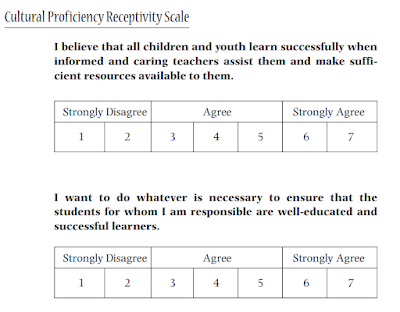Li Ziqi 李子柒
The first influencer I selected is Li Ziqi because she has a unique impact on social media through her vlogs that showcase Chinese rural life and traditional food. Her videos are not only visually stunning but also provide valuable insights into Chinese culture and traditions (Whyke et al., 2022). She grew up in a rural village in Sichuan, China, where she experienced poverty and the loss of her parents at a young age. As a result, she had to take on various jobs to support herself and her grandparents. Despite facing tremendous hardships in her life, she displayed a strong ability to cope with conflicts. She chose to learn new skills and worked in the city to support her grandmother, showcasing her courage and intelligence (Liang, 2021). She found resilience in traditional skills passed down through generations and turned to creating videos to display her talents, which eventually gained popularity worldwide. She handled her hardships by leveraging her creativity, determination, and skills to not only overcome her challenges but also inspire and uplift others through her experience. Her personal journey resonates with many viewers, inspiring them to overcome obstacles and pursue their passions. Her influence and respect within the social media community are evident from her large following. With 17.5 million subscribers on YouTube and 26 million followers on Weibo, she has positively impacted the audience (Whyke et al., 2022). You may follow her YouTube channel https://www.youtube.com/@cnliziqi, and her WeiBo https://weibo.com/mianyangdanshen?refer_flag=1005050010
Li Ziqi has a positive impact on my personal life. As an immigrant living in the United States, her videos evoke a sense of nostalgia and remind me of my own childhood and the cultural traditions I grew up with. Watching her cooking with fresh ingredients and traditional techniques take a lot of overseas Chinese people back to the flavors of China (Liang, 2021). Her dedication to preserving and sharing Chinese culture has inspired me to appreciate the beauty of my heritage. In my professional life, her approach to conflict resolution has taught me the importance of perseverance and creativity. By showcasing her ability to adapt to challenging circumstances and find innovative solutions, she has encouraged me to approach conflicts with a proactive and open mindset. Her emphasis on craftsmanship and attention to detail has also influenced my work ethic, reminding me of the importance of taking pride in the quality of my work.
Li Jiaqi 李佳琦
Another influencer I selected is Li Jiaqi because of his impact in the beauty industry. He started his career as a shop assistant for L'Oréal in China and later ventured into streaming on Taobao, a popular online shopping platform (Bellucci, 2022). As a social media beauty influencer, he gained popularity by trying and describing various lipsticks during his live streaming sessions. Despite facing criticism and bias as a male beauty influencer, he chose to resolve conflicts by deepening his product knowledge and enhancing his skills in describing the benefits of the beauty products he introduced. Instead of quitting under pressure, he persevered and earned the respect of his audience through his dedication and expertise (Bellucci, 2022). His influence and respect within the beauty community can be seen through his large following and the impact he has had on consumer behavior. His ability to respectfully share different perspectives on beauty, including how men interpret beauty, has helped him connect with a wide range of audiences. By empowering women to accept themselves, build confidence, and choose appropriate cosmetic products, he has become a trusted figure in the beauty industry (Bellucci, 2022). His approach to conflict resolution is centered around knowledge, dedication, and respectful communication. By continuously expanding his expertise and engaging with his audience, he was able to overcome biases and gain respect in the beauty industry. His ability to navigate conflicts by offering different perspectives and empowering individuals aligns with the principles of conflict resolution, promoting understanding and acceptance. If you are interested in following him, his WeiBo is https://weibo.com/u/1968758563, and his DouYin, which is the Chinese version of TikTok, is 166902759.
Li Jiaqi influenced me on my perception of beauty and self-confidence. His emphasis on embracing one's unique features and choosing makeup styles that suit individual preferences and occasions has taught me to appreciate my own beauty and feel confident in my choices. Additionally, his dedication and pursuit of knowledge inspire me to continually learn and improve in my own professional endeavors.
In my professional journey, I faced gender discrimination when I encountered an interviewer who held the belief that women cannot be effective leaders. Consequently, I was denied a leadership position that I deserved. However, I witnessed Li Jiaqi's success as a male influencer in the female-dominated beauty industry shattered the gender biases that many people held. His inspiring story has encouraged me to persevere in my pursuit of leadership positions and strive to become an exceptional education leader in the male-dominated leadership field.
Bellucci, M. (2022). Li Jiaqi: the live-steaming king in China. Long Advisory.
https://longadvisory.eu/li-jiaqi-live-streaming-king-in-china/
Liang, L. (2021). Consuming the pastoral desire Li Ziqi, food vlogging, and the structure of
feeling in the era of microcelebrity. Research Articles, 1(2), 7-39.
https://doi.org/10.3998/gs.1020
Whyke, T.W., Chen, Z.T. & Lopez-Mugica, J. (2022). An analysis of cultural dissemination
and national image construction in Chinese influencer Li Ziqi’s vlogs and its impact on
international viewer perceptions on YouTube. The Journal of Chinese Sociology, 9(14),
2-19. https://doi.org/10.1186/s40711-022-00173-2


















